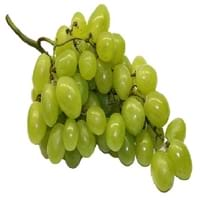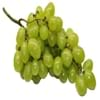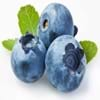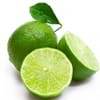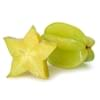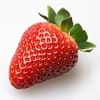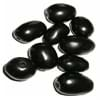Health Benefits
Cancer prevention, Kidney stone treatment, Prevents constipation, Treatment of alzheimer's disease
Anti-oxidant properties, Anti-inflammatory properties, Cancer prevention, Maintains healthy cholesterol level, Reduces blood circulation problems, Treatment of cough, fever & sore throat, Treatment of Hypertension
General Benefits
Digestive aid, Improves eye vision, Maintains healthy cholesterol level, Treatment of migraine
Treatment of asthma, Treatment of cataract, Treatment of hepatitis, Treatment of macular degeneration, Treatment of neurodegenerative diseases
Skin Benefits
Anti-aging benefits, Heals sunburn, Skin rejuvenation, Treatment of dark spots
Treatment of Rheumatism & Dermatitis, Treatment of Skin Inflammation
Hair Benefits
Prevents hair loss, Regulates hair growth, Treatment of dandruff
Unknown
Allergy Symptoms
Anaphylaxis, Asthma, Breathing difficulty, Coughing, Drop in blood pressure, Hives, Skin rash, Stuffy nose, Swelling of mouth, tongue or lips, Wheezing
NA
Side Effects
Allergic reaction, Skin rash, Might slow down the process of blood clotting
Hypertension, Ventricular Tachycardia
Best Time to Eat
As a snack in the late afternoon, Don't consume at night and before bed, Eat the fresh ones, avoid mixing with any other foods, don't eat after meal., Morning time (before lunch)
As a snack in the late afternoon, Eat the fresh ones, avoid mixing with any other foods, don't eat after meal., Morning time (before lunch), Strictly avoid empty stomach
Vitamin B5 (Pantothenic Acid)
Not Available
Vitamin B6 (Pyridoxin)
Not Available
Vitamin B9 (Folic acid)
Not Available
Vitamin C (Ascorbic Acid)
Vitamin K (Phyllochinone)
Not Available
Lutein+Zeaxanthin
Not Available
Phytosterol
Not Available
Water Content
Not Available
Calories in Fresh Fruit with Peel
Calories in Fresh Fruit without Peel
Not Available
Not Available
Calories in Frozen Form
Not Available
Calories in Dried Form
Not Available
Calories in Canned Form
Not Available
Type
Berry
Fruit vegetable
Season
Autumn, Summer
Spring, Summer
Varieties
Cabernet Sauvignon, Merlot, Pinot Noir, Syrah/Shiraz and Zinfandel
Physalis franchetii, Physalis pruinosa, Physalis peruviana, Physalis heterophylla and Physalis philadelphica
Color
Green, Red
Bright Yellow, Orange
Inside Color
Light Green
Orange
Origin
Western Asia, Central Europe
Chile, Peru
Soil Type
Clay loam, Sandy loam
NA
Climatic Conditions
Warm
NA
Facts about
- If left alone, a grapevine can spread 50 feet and even more.
- There are more than 8,000 varieties of grape worldwide.
- They are available in 7 different colors: red, green, white, black, purple, blue and golden.
NA
Other Countries
Argentina, Armenia, Australia, Chile, France, Iran, Italy, Portugal, Romania, Turkey, United States of America
NA
Top Importer
United States of America
Netherlands
Top Exporter
Chile
Colombia
Botanical Name
Vitis vinifera
Physalis Peruviana
Synonym
Not Available
Alkekengi, Herschellia & Pentaphitrum
Subkingdom
Tracheobionta
Tracheobionta
Division
Magnoliophyta
Magnoliophyta
Class
Magnoliopsida
Magnoliopsida
Subclass
Rosidae
Asteridae
Family
Vitaceae
Solanaceae
Species
Vitis vinifera
Physalis
Generic Group
Grape
Not Available
Difference Between Grape and Physalis
We might think that Grape and Physalis are similar with respect to nutritional value and health benefits. But the nutrient content of both fruits is different. Grape and Physalis Facts such as their taste, shape, color, and size are also distinct. The difference between Grape and Physalis is explained here.
The amount of calories in 100 gm of fresh Grape and Physalis with peel is 69.00 kcal and 77.00 kcal and the amount of calories without peel is Not Available and Not Available respectively. Thus, Grape and Physalis belong to Low Calorie Fruits and High Calorie Fruits category.These fruits might or might not differ with respect to their scientific classification. The order of Grape and Physalis is Vitales and Solanales respectively. Grape belongs to Vitaceae family and Physalis belongs to Solanaceae family. Grape belongs to Vitis genus of Vitis vinifera species and Physalis belongs to Physalis genus of Physalis species. Beings plants, both fruits belong to Plantae Kingdom.
